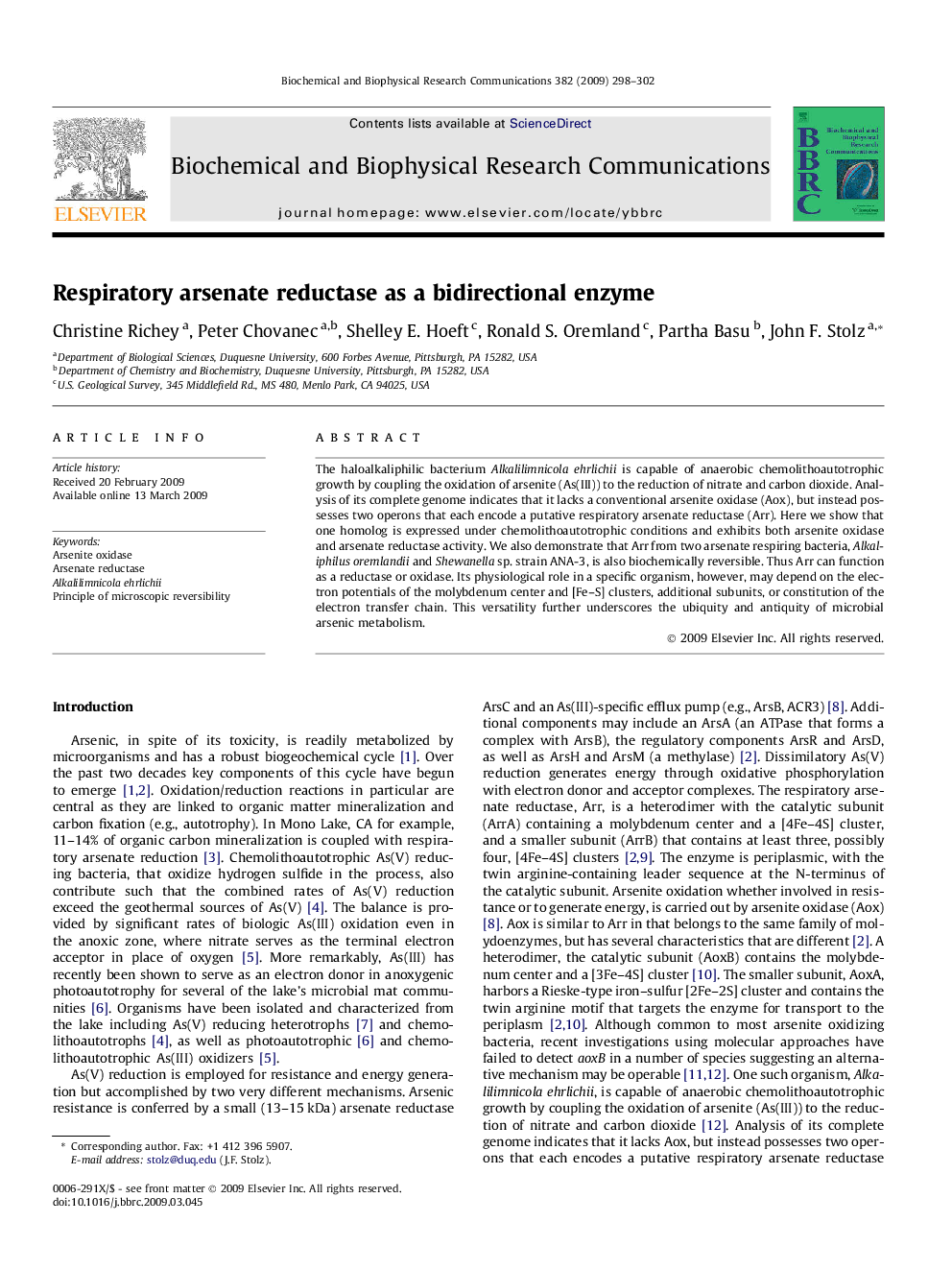| Article ID | Journal | Published Year | Pages | File Type |
|---|---|---|---|---|
| 10766179 | Biochemical and Biophysical Research Communications | 2009 | 5 Pages |
Abstract
The haloalkaliphilic bacterium Alkalilimnicola ehrlichii is capable of anaerobic chemolithoautotrophic growth by coupling the oxidation of arsenite (As(III)) to the reduction of nitrate and carbon dioxide. Analysis of its complete genome indicates that it lacks a conventional arsenite oxidase (Aox), but instead possesses two operons that each encode a putative respiratory arsenate reductase (Arr). Here we show that one homolog is expressed under chemolithoautotrophic conditions and exhibits both arsenite oxidase and arsenate reductase activity. We also demonstrate that Arr from two arsenate respiring bacteria, Alkaliphilus oremlandii and Shewanella sp. strain ANA-3, is also biochemically reversible. Thus Arr can function as a reductase or oxidase. Its physiological role in a specific organism, however, may depend on the electron potentials of the molybdenum center and [Fe-S] clusters, additional subunits, or constitution of the electron transfer chain. This versatility further underscores the ubiquity and antiquity of microbial arsenic metabolism.
Keywords
Related Topics
Life Sciences
Biochemistry, Genetics and Molecular Biology
Biochemistry
Authors
Christine Richey, Peter Chovanec, Shelley E. Hoeft, Ronald S. Oremland, Partha Basu, John F. Stolz,
